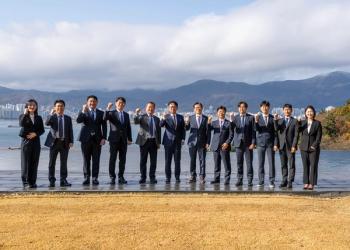
Dual unpressurized vs. dual pressurized seals
Use pressurized dual seals whenever possible in applications that can potentially be hazardous to personnel safety and/or the environment. The use of pressurized dual seals, which require a safe, non-toxic barrier fluid at a higher pressure than the process fluid at the seal face, will positively ensure that the process fluid will be contained, since a positive barrier fluid to process fluid differential pressure will be maintained by the flush system.
Confirmation of compatibility of the barrier and process fluids is required. The barrier fluid can be pressurized by any of the following means:
- Plant nitrogen header pressure – if the lowest value of header pressure is sufficient
- Nitrogen bottles and a regulator
- A dedicated barrier fluid seal system
It is recommended that a differential pressure gauge be installed to record the differential pressure between the reference fluid pressure (pressure that is being sealed) and the pressure of the barrier fluid. This will ensure that the proper barrier fluid to seal fluid pressure is maintained, and that the pressure of the barrier fluid is not high enough to force the inner seal open.
Today, dual seals are being selected for more and more applications, due to environmental restrictions. There are two arrangements in which dual seals can be used, namely dual unpressurized (previously called tandem) and dual pressurized (previously called double).
The dual unpressurized seal uses a buffer fluid at or near atmospheric pressure to lubricate the atmospheric side seal. The buffer fluid pressure is significantly less than the seal chamber pressure, so any leakage occurring across the process side seal will leak into the buffer fluid.
This arrangement is very common in applications containing VOCs as it can potentially reduce the leakage to the environment.
A dual pressurized seal uses a barrier fluid (same fluid as dual unpressurized) at a pressure that is 175 kPa (25psi) above seal chamber pressure to lubricate the seals. Since the barrier fluid pressure is higher than the seal chamber pressure, any leakage occurring at the process side seal will enter the pump. This arrangement (when working properly) ensures no leakage of the pumped fluid to atmosphere. This arrangement requires the barrier fluid to be compatible with the pumped fluid, since the barrier fluid leaks into the pump.
Dual unpressurized:
- Primary leakage is process fluid; therefore the secondary seal is essentially a backup seal
- Does not require the use of nitrogen or other inert gases
Dual pressurized:
- Primary leakage is barrier fluid into the process; therefore the process must be able to accept a small amount of barrier fluid
- Requires the use of nitrogen (or other compatible inert gas) to pressure seal reservoir approx. 175 kPa (25psig) above seal chamber pressure in a Plan 53
- A Plan 54 uses an external fluid (synthetic skid or another pump) to lubricate the seals at a pressure of 175kPa (25psi) above seal chamber pressure
It has been our experience that if an inert gas (or external fluid) is available at the required pressure and the pumped fluid can accept the barrier fluid (compatible), a dual pressurized seal is potentially more reliable in VOC service.
The use of unpressurized seals in hydrocarbon and/or toxic applications has resulted in flammable, toxic and/or sour fluid releases to the plant environment, which has exposed the plant and personnel to hazards.
This best practice has been used since the mid-1990s when multiple, unpressurized (tandem) seal failures and process fluid releases were experienced, due to improper operational and monitoring procedures. Since that time, this best practice has resulted in optimum plant safety and seal MTBFs (greater than 100 months in some cases).
Newsletter
Power your knowledge with the latest in turbine technology, engineering advances, and energy solutions—subscribe to Turbomachinery International today.





